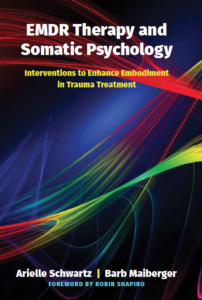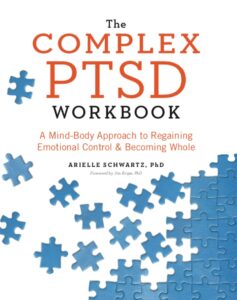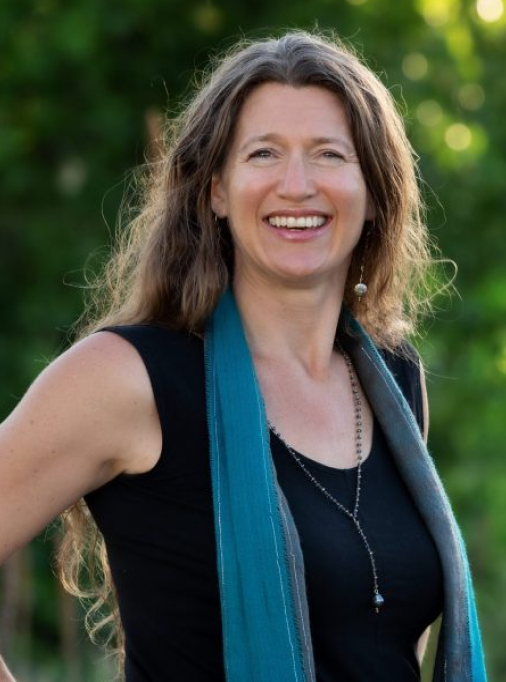Yoga saved her life. Six months before her wedding she travelled to South America with her parents; without warning her mother had a heart attack and died in her arms. Coming home, she attempted to re-engage her life as she had known it. But the panic and depression were unbearable. She lost everything she cared about; her mother, her fiancé, her home. Knowing herself as an active, successful woman, she was unrecognizable to herself…
In this post we explore the healing benefits of yoga for trauma through the lens of one woman’s journey into and out of PTSD. When suffering the painful consequences of trauma it is imperative to know there is a healing path. You can reclaim your life from the effects of trauma and research has demonstrated that yoga is a valuable adjunctive treatment to psychotherapy. As a clinical psychologist with twenty years experience teaching yoga, I have not only experienced but also witnessed how cultivating a yoga practice can change lives.
“Every day you meet yourself on the mat where you are. In yoga we aim to explore our “edge” by breathing into sensation, tolerating discomfort, and finding ease. This deepening in your practice might be discovered during a longer hold in warrior pose or in the midst of the stillness of child’s pose. How does your body want to move today?”
-Dr. Arielle Schwartz
Recently one of my yoga students shared with me her story about how yoga saved her life. Life was good. She had a job she loved, was soon to be married, and had recently moved into a new home with her fiancé. Six months before the wedding she travelled to South America with her parents and without warning her mother had a heart attack and died in her arms. In shock and in grief she came home. Upon her return she attempted to re-engage her life as she had known it. But the grief, anxiety, and panic became unbearable and began to interfere with her ability to live her life.
She went to her doctor who prescribed medications to manage her symptoms. Over the next several months her depression and panic worsened. She became unhitched emotionally; alternately crying uncontrollably and feeling unmanageable rage. Knowing herself as an active, successful woman she was unrecognizable to herself. She felt too tired to exercise and too wired to get the deep rest she so badly needed. Her relationship suffered from the stress. Sadly, within a year she lost her mother, her husband-to-be, and her home.
She began to feel that the medications were worsening her symptoms and after consulting her medical doctors decided to stop taking them. She began therapy and understood that she was suffering from Post Traumatic Stress Disorder (PTSD) but she still couldn’t see a way out of the emotional and physical pain. She contemplated ending her life. This was no way to live.
Then a friend invited her to attend a yoga class. Initially she was only able to do a small portion of the practice; however, she described a remarkable change after the class. Walking out of class she felt “like herself” for about 30 minutes; which during that time felt like a miracle. She was intrigued and went back. Again, she felt both focused and relaxed afterwards; a balance she had been seeking for many months. She began to practice yoga like her life depended upon it, and it did. She shared that the positive effect was amplified when she engaged in standing postures and that slowly reclaiming her physical strength and flexibility was key in her recovery. She discovered that over time the lingering positive feeling lasted longer and carried through into the next day.
Now, fifteen years have passed since her mother’s death and she continues her yoga practice to maintain her mental wellbeing. She proudly asserts that she has reclaimed her life from the costs of PTSD.
I share her story at her request in hopes that it may make a difference in the life of another.
Wired and tired. This combination of anxiety and depression is a noteworthy characteristic of PTSD; an alternation between two paradoxical autonomic nervous system states:
With PTSD we lose a sense of choice regarding our nervous system state. We can either feel stuck “on” or stuck “off”. Much of the literature on trauma recovery is focused on the regulation of our nervous system states. Psychotherapy focused on healing trauma, especially EMDR and Somatic Psychology, recognizes an individual’s capacity to successfully recover from the effects of trauma. While medications can sometimes be necessary, it is important to note that some medications interfere with recovery from PTSD, as was the case with my yoga student. Rather than managing symptoms, healing requires having an opportunity to process through the cognitive, emotional, and physiological reactions to the event. More recently, yoga has been recognized in psychology as a valuable adjunctive treatment when added to psychotherapy.
Yoga offers tools to work directly with imbalances in the nervous system resulting from PTSD including meditation practices, breathing practices, and movement practices. We have the opportunity to observe our mind; cultivating increased awareness about the relationship between our thoughts, emotions, and body. There are practices aimed towards relaxing or re-energizing ourselves depending upon what is needed to establish equilibrium.
Recently, research by Bessel van der Kolk and colleagues at the Justice Resource Center in Brookline, Massachusetts demonstrated the importance of yoga in the treatment of PTSD. The effects of yoga practices are being shown to balance autonomic sympathetic activation, reduce blood pressure, improve neuroendocrine and hormonal activity, and decrease reported symptoms of PTSD. Their treatment model includes attending a trauma-sensitive yoga class as an adjunctive treatment alongside psychotherapy for PTSD. Creating a class environment that feels emotionally and physically safe is of primary importance given the vulnerability associated with healing from trauma. This may include soft lighting, minimizing use of mirrors, and setting a tone of gentleness and non-judgment.
Unfortunately, trauma-sensitive yoga classes are not available in all areas. In such cases, focus on finding a yoga class in your community that feels nurturing and safe. Attending a yoga class has added benefits of developing community and reducing the isolation associated with PTSD. There are a wide range of yoga styles including Kripalu, Ashtanga, and Kundalini to name just a few. If you are new to yoga, I recommend trying out several types of classes until you find one that fits your needs.
If you are feeling too vulnerable to attend a public class or cannot find the right class in your area it may be necessary to develop a home-based practice. Luckily, in our digital age, the internet can help you access many of the world’s best teachers from the comfort of your living room. Here are several considerations when cultivating your personal practice of yoga for trauma:
You can reclaim your life from the effects of PTSD, one breath at a time.
Related Posts:
Connect to this post? The EMDR Therapy and Somatic Psychology book, is available on Amazon! Click here to check it out and increase your toolbox for healing. An integrative and effective approach to healing from trauma.


Connect to this post? The Complex PTSD Workbook, now available on Amazon! Click here to check it out and increase your toolbox for healing. Whether you are a client or a therapist this book will offer a guided approach to trauma recovery.
She offers trainings for therapists, maintains a private practice, and has passions for the outdoors, yoga, and writing. Dr. Schwartz is the author of The Complex PTSD Workbook: A Mind-Body Approach to Regaining Emotional Control and Becoming Whole (Althea press, 2016) and co-author of EMDR Therapy and Somatic Psychology: Interventions to Enhance Embodiment in Trauma Treatment (Norton, 2018). She is the developer of Resilience-Informed Therapy which applies research on trauma recovery to form a strength-based, trauma treatment model that includes Eye Movement Desensitization and Reprocessing (EMDR), somatic (body-centered) psychology and time-tested relational psychotherapy. Like Dr. Arielle Schwartz on Facebook, follow her on Linkedin and sign up for email updates to stay up to date with all her posts.

Arielle Schwartz, PhD, is a psychologist, internationally sought-out teacher, yoga instructor, and leading voice in the healing of PTSD and complex trauma. She is the author of five books, including The Complex PTSD Workbook, EMDR Therapy and Somatic Psychology, and The Post Traumatic Growth Guidebook.
Dr. Schwartz is an accomplished teacher who guides therapists in the application of EMDR, somatic psychology, parts work therapy, and mindfulness-based interventions for the treatment of trauma and complex PTSD. She guides you through a personal journey of healing in her Sounds True audio program, Trauma Recovery.
She has a depth of understanding, passion, kindness, compassion, joy, and a succinct way of speaking about very complex topics. She is the founder of the Center for Resilience Informed Therapy in Boulder, Colorado where she maintains a private practice providing psychotherapy, supervision, and consultation. Dr. Schwartz believes that that the journey of trauma recovery is an awakening of the spiritual heart.
Beyond Trauma — A Guided Mind-Body Journey of Resilience – (September 20, 2024 – September 22, 2024)
Applied Polyvagal Theory in Yoga—An Immersive Therapeutic Weekend (June 21st & 22nd, 2024)
2 Responses
Thanks for all of this information. Do you know of any trauma sensitive yoga classes in the boulder or Denver areas? Thank you
Simone,
Yes. I teach a trauma sensitive class on Thursdays that you can learn more about on my website. I also know Ines Manteuffel teaches classes here in Boulder. You can find her at renewalhealingarts.com.
Give me a call if you can com on Thursdays.
Dr. Arielle